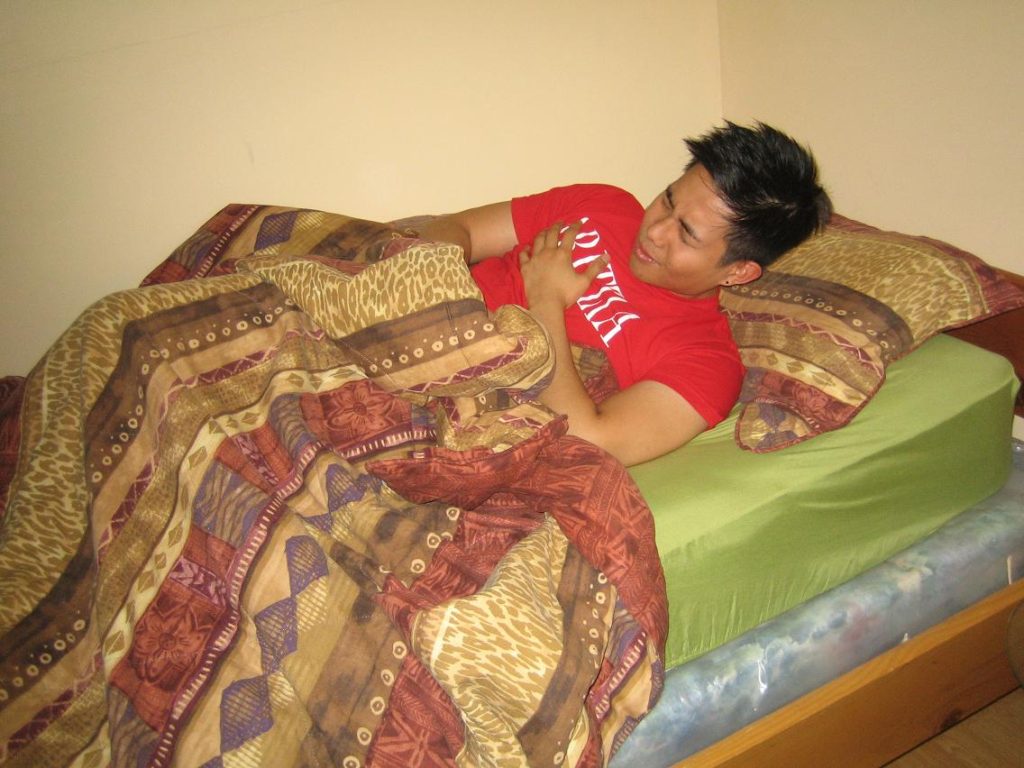Shortness of breath is also known as dyspnea which involves difficulty breathing and feeling suffocated. Breathlessness can be mild, moderate or severe and sometimes accompanied by anxiety and stress that can make the condition worse.
[youtube url=”https://www.youtube.com/watch?v=2auLobkUzSQ” width=”220″]There is shortness of breath when exceeding the usual activity level or climbing high altitudes where oxygen level is low and normal breathing returns after resting. Shortness of breath can be caused by conditions such as respiratory infections, chronic bronchitis, disease of the heart and allergies. In addition, shortness of breath is a common symptom of a lung cancer.
Causes
- Carbon monoxide poisoning
- Asthma
- Heart attack
- Pneumonia
- Low blood pressure or hypotension
Perform exercises regularly to help with shortness of breath - Upper airway obstruction
- Pulmonary embolism
Treatment of shortness of breath
- Breathe clean air. Close windows in the room, use an air-conditioning unit and make sure the air filter is clean to keep the air that is being inhaled free from air pollutants.
- Install a room ionizer which is very helpful with environments that are dusty.
- Loss some weight since excess weight especially in the middle part of the body restricts expansion of the lungs. Start a dietary program for losing weight and seek nutritional counseling.
- Perform deep breathing exercises such as yoga for the proper functioning of the lungs. It is a good therapy for the mind and also for the organs of the body.
- Perform exercises regularly to help with shortness of breath that usually occurs among physically unfit, overweight or obese individuals. Perform regular exercises such as jogging, walking, swimming or aerobic exercises to help improve stamina and reduces the episodes of shortness of breath
- Quit smoking and avoid inhaling vapors from paint in order to prevent breathing difficulties.
- If the affected person is suffering from common cold or cough, steam inhalation helps in keeping nasal passages decongested. It also helps in expelling the buildup of mucus in the stomach.
Additional measures
- Drink plenty of water to keep the body well hydrated and helps in thinning out the mucus to make it easier to expel.
- Add a pinch of black pepper to a tea to open up the bronchial tubes to promote easier breathing.
- Drink a cup of black coffee since it also helps with shortness of breath. The caffeine found in coffee helps lessen fatigue of the respiratory muscles and also helps in improving function of the airway and lessen the symptoms of asthma. Drink at least 1-2 cups of strong black coffee every day. Avoid drinking coffee excessively to prevent an erratic increase in the heart rate and blood pressure.
- Steam inhalation can also help with shortness of breath. Fill a bowl with hot water and add a few drops of essential oil such as eucalyptus or peppermint essential oils. Place a towel over the head and inhale the steam with deep breaths for several minutes. The moisture and heat from the steam helps in breaking up and dissolving mucus and for easy elimination from the body.
FACT CHECK
https://www.healthline.com/health/home-treatments-for-shortness-of-breath
https://www.mayoclinic.org/symptoms/shortness-of-breath/basics/causes/sym-20050890


